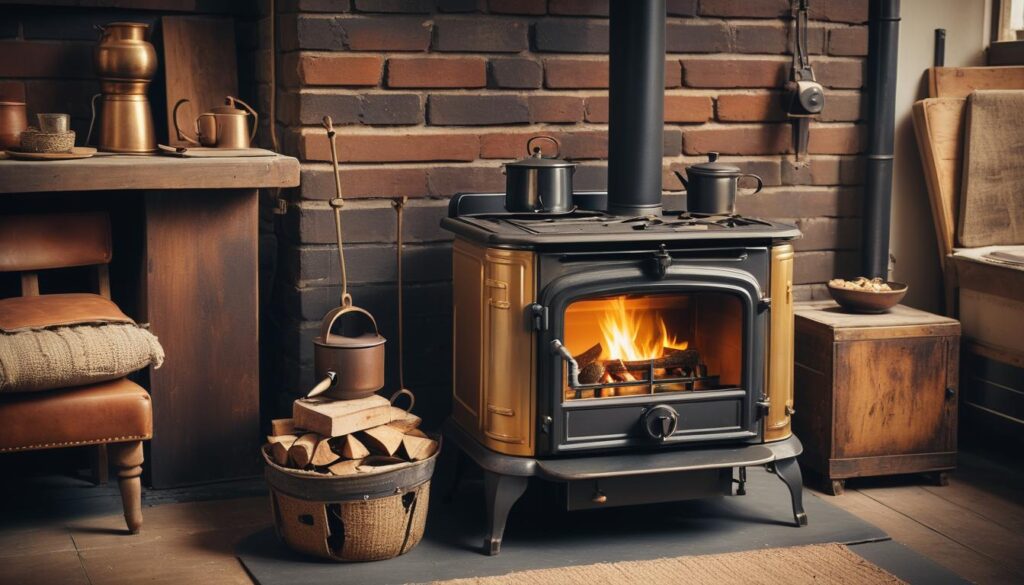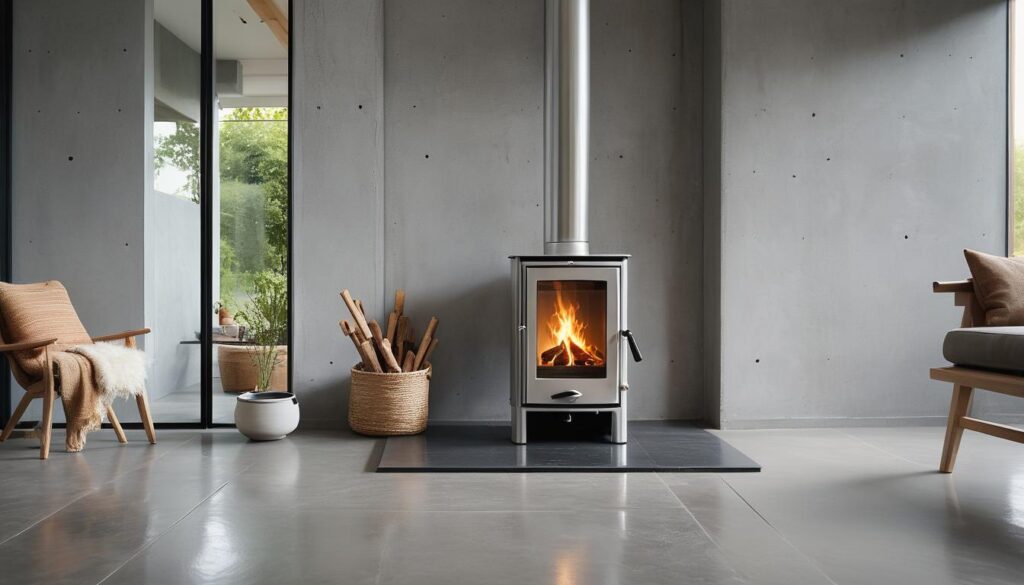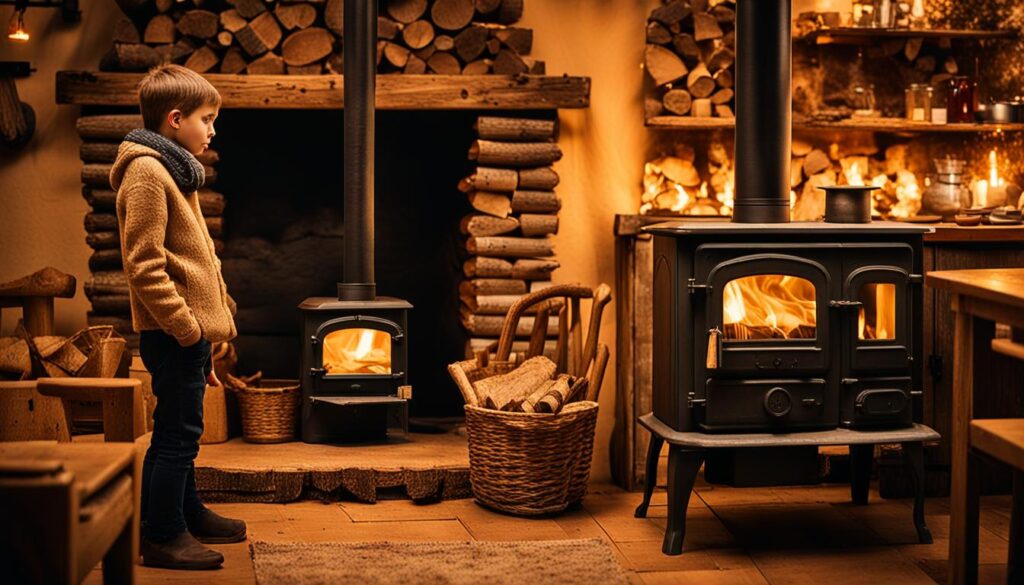- Introduction
- Ancient Origins: Early Wood-Burning Stoves (Before 1700s)
- Evolution and Innovation (1700s-1900s)
- Mid-Century Developments and Safety Features (1900s-1980s)
- Modern Wood-Burning Stoves (1990s-Present)
- Comparative Analysis: Then vs. Now
- Environmental Impact and Sustainability
- Conclusion
- References

Introduction
As the chill of winter sets in, the warmth and coziness of a wood-burning stove can be incredibly inviting. But have you ever wondered where this beloved heating method originated? From ancient civilizations to modern-day innovations, The History of Wood-Burning Stoves is a rich and fascinating tale of human ingenuity. In this article, we’ll delve into the evolution of wood-burning stoves, highlighting key milestones, technological advancements, and the environmental considerations that shape their use today.
Ancient Origins: Early Wood-Burning Stoves (Before 1700s)
| Time Period | Description | Notable Features |
|---|---|---|
| Ancient Greece/Rome (500 BCE – 500 CE) | Basic fire pits and hearths | Simple, open designs for central heating |
| Medieval Europe (500 – 1500 CE) | Cast-iron cauldrons and primitive stoves | Limited airflow, inefficient burning |
| 16th-17th Century Europe | Early enclosed stoves (e.g., German “Kachelofen”) | Improved heat retention, decorative elements |
In ancient times, people relied on open fires for warmth. As civilizations evolved, so did heating solutions. The first enclosed stoves emerged in Europe, offering better heat retention and aesthetic appeal.
Evolution and Innovation (1700s-1900s)
| Time Period | Description | Notable Features |
|---|---|---|
| 18th Century | Cast-iron stoves become widespread | Improved durability, various designs |
| ** Late 19th Century** | Introduction of steel stoves and chimneys | Enhanced safety, increased efficiency |
| Early 20th Century | Development of airtight stoves | Reduced air pollution, better heat control |
The Industrial Revolution brought significant advancements in materials and design. Cast-iron stoves gave way to steel, and the introduction of chimneys greatly improved safety. Airtight stoves marked a crucial step towards more efficient and environmentally friendly heating.
Mid-Century Developments and Safety Features (1900s-1980s)
- Post-WWII: Mass production makes wood-burning stoves more accessible
- 1960s-1970s: Emphasis on safety features (e.g., spark screens, heat-resistant glass)
- 1980s: Introduction of catalytic converters to reduce emissions
As the world rebuilt after WWII, wood-burning stoves became a staple in many homes. The latter half of the 20th century saw a heightened focus on safety and the first steps towards mitigating environmental impact.
Modern Wood-Burning Stoves (1990s-Present)
- 1990s: Advanced combustion technologies and more efficient designs
- 2000s: Increased regulation (e.g., EPA standards in the US) for emissions
- Present Day:
- High-efficiency, low-emission stoves
- Integration with renewable energy systems
- Sustainable, eco-friendly materials and practices
Today’s wood-burning stoves are a far cry from their ancient ancestors. Modern designs prioritize efficiency, sustainability, and minimal environmental footprint.
Comparative Analysis: Then vs. Now
| Feature | Early Models | Modern Stoves |
|---|---|---|
| Efficiency | 10-20% | 70-90% |
| Emissions | High particulate matter and pollutants | Significantly reduced, meeting strict regulations |
| Safety | Limited safety features | numerous safety features (spark screens, heat-resistant glass, etc.) |
| Materials | Primarily cast-iron and steel | Diverse, including sustainable and eco-friendly options |
The contrast between early wood-burning stoves and their modern counterparts is stark, reflecting centuries of innovation and a growing awareness of environmental responsibility.
Environmental Impact and Sustainability
- Renewable Energy Source: Wood is a renewable resource when harvested sustainably
- Emissions Regulations: Stricter standards worldwide aim to minimize pollution
- Carbon Neutral: Modern, efficient stoves can achieve carbon neutrality over their lifespan
While wood-burning stoves have an environmental impact, modern designs and sustainable practices significantly mitigate this. When properly managed, wood can be a carbon-neutral heating solution.
Conclusion
The history of wood-burning stoves is a testament to human innovation, from humble beginnings to the sophisticated, eco-friendly heaters of today. As we move forward, it’s crucial to balance our desire for warmth and comfort with environmental stewardship. Whether you’re a history enthusiast, a homeowner, or simply someone who appreciates the cozy glow of a wood fire, understanding The History of Wood-Burning Stoves enriches our appreciation for this timeless heating method.
References
Ancient Origins and Early History
- “The History and Evolution of Wood Stoves” by Kunst Stoves
https://kunststoves.com/history-wood-stove/1
This resource provides a good overview of wood stove history from ancient times through the Renaissance and Industrial Revolution.
18th-19th Century Developments
- “A Brief History of the Wood Stove” by Stone Hearth Firewood
https://stonehearthfirewood.com/a-brief-history-of-the-wood-stove/2
Covers key innovations in the 18th-19th centuries, including Franklin’s stove design and improvements in efficiency.
Evolution to Modern Stoves
- “The History of the Modern Woodburning Stove” by GR8 Fires
https://www.gr8fires.co.uk/blogs/stoves/woodburning-stove-history3
Traces the development of wood stoves from early designs to modern efficient models.
Comprehensive Timeline
- “History of Wood Stoves” by Alliance for Green Heat
https://www.forgreenheat.org/history-of-wood-heat4
Provides a detailed chronological history of wood heating from ancient times to the present day.


